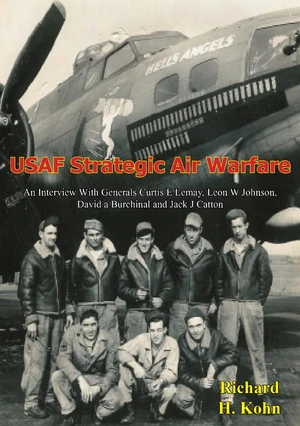âMilitary history helps provide a realistic perspective on warfare. Through the study of past events, we gain insight into the capabilities of armed forces and, most importantly, a sound knowledge of the policies, strategies, tactics, doctrine, leadership, and weapons that have produced success in battle. Each of us, in broadening our knowledge of air powerâs past, helps to maintain the most effective Air Force possible, now and in the future.â-Foreword. Early in June 1984 some thirty-five of the retired four-star generals of the United States Air Force gathered in Washington, D.C., for the annual Senior Statesmen Conference. Each year since the early 1960s the Air Force has invited its retired four-star generals to Washington. From that group in 1984, the Office of Air Force History invited four general officersâGenerals Curtis E. LeMay, Leon W. Johnson, David A. Burchinal, and Jack J. Cattonâto participate in a group oral interview on the history of strategic air warfare. They accepted and on June 15, 1984, at Bolling Air Force Base, the four discussed for nearly three hours the development and evolution of strategic air warfare. Because the session ended without time for a discussion of the Cuban Missile Crisis and the Vietnam War, the four conferred again, this time by telephone, to discuss these and other issues not considered earlier. This interview was the third in a series begun by the Office of Air Force History with the âsenior statesmen,â the first in 1982 covering air superiority in World War II and Korea, the second in 1983 discussing the type of aerial interdiction used in World War II, Korea, and Vietnam.
Price history
Jan 29, 2023
€2.59

